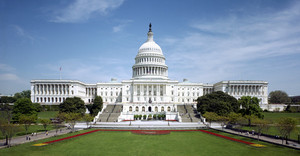A draft of the National Strategy of Intellectual Property (ENPI) was published in the Brazilian Official Gazette Public Consultation #46/2020 on 10 August 2020. It was produced by a working group consisting of various public administration entities coordinated by the Interministerial Group on Intellectual Property (GIPI), which is presided over by the Ministry of Economy. The draft was made available for a 20-day period (which was then extended) for the public to review.
The objective of the ENPI is to lay the groundwork for a balanced and effective National System of Intellectual Property (SNPI) which will aim to foster creativity, investment in innovation and access to knowledge in order to promote competition and ultimately further the social and economic development of Brazil. The ENPI has seven structural axes: (1) Intellectual Property (IP) for Competitiveness and Development; (2) Dissemination, Education, and Training in IP; (3) Governance and Institutional Strengthening; (4) Modernization of Legal and Infralegal Marks; (5) Legal Observance and Security; (6) Intelligence and the Vision of the Future; and (7) Inclusion of Brazil in the Global IP system. The public were asked to structure their comments and suggestions based on each of these seven structural axes.
The ENPI draft proposes several actions to be implemented which follow the general guideline that IP is a tool that should be used to foster innovation and attract investment. It also proposes to establish new IP measures to enable the digital transformation of Brazilian companies. Several significant actions proposed by the draft are detailed below.
In Structural Axis 3 (Governance and Institutional Strengthening), the draft proposes the development of an IP policy within the Ministry of Health which would improve the continuation of strategic actions.
Among the proposed actions in Structural Axis 4 (Modernization of Legal and Infralegal Marks), several would impact the pharmaceutical area. One example is a proposal to support measures to adjust the patents on drugs that are considered strategic to the Brazilian Health System. This proposal aims to: (1) enable changes to the minimum medication price based on the remaining term of a patent; (2) include patent evaluation before permitting the commercialization of a first generic medicine; and (3) review the National Policy of Medicine. Structural Axis 4 also proposes the creation of a technical group at GIPI to evaluate and propose adjustments to several IP legal ‘landmarks’ that impact public health and health innovation policy. These adjustments will be directed at: (1) an article which states that a patent will have at least a 10-year term from the date of grant; (2) an article which establishes the Brazilian Health Regulatory Agency (Agência Nacional de Vigilância Sanitária, ANVISA) prior consent for the granting of patents on pharmaceutical products and processes; (3) data protection for tests submitted to ANVISA for obtaining marketing authorization for drugs; and (4) evaluating medicine repurposing (second medical use patents). These proposed measures may help to improve patient access to generic medicines and biosimilars in Brazil.
Structural Axis 7 (inclusion of Brazil in the Global IP system) aims to improve Brazil’s participation in IP international forums, stimulate the presence of Brazilian companies overseas and foster a local business environment that is attractive to foreign investment. It also seeks to promote Brazil’s inclusion in the Global Patent Prosecution Highway’s pilot programme, and various other international agreements.
Once public feedback has been consolidated, GIPI will be responsible for the governance and implementation of the ENPI. Implementation will continue for about 10 years; it will be divided into Action Plans, each with their own 2-year schedule aligned with the government’s future actions for the IP sector.
Related article
The impact of generics regulation in Brazil
Permission granted to reproduce for personal and non-commercial use only. All other reproduction, copy or reprinting of all or part of any ‘Content’ found on this website is strictly prohibited without the prior consent of the publisher. Contact the publisher to obtain permission before redistributing.
Copyright – Unless otherwise stated all contents of this website are © 2020 Pro Pharma Communications International. All Rights Reserved








 0
0











Post your comment